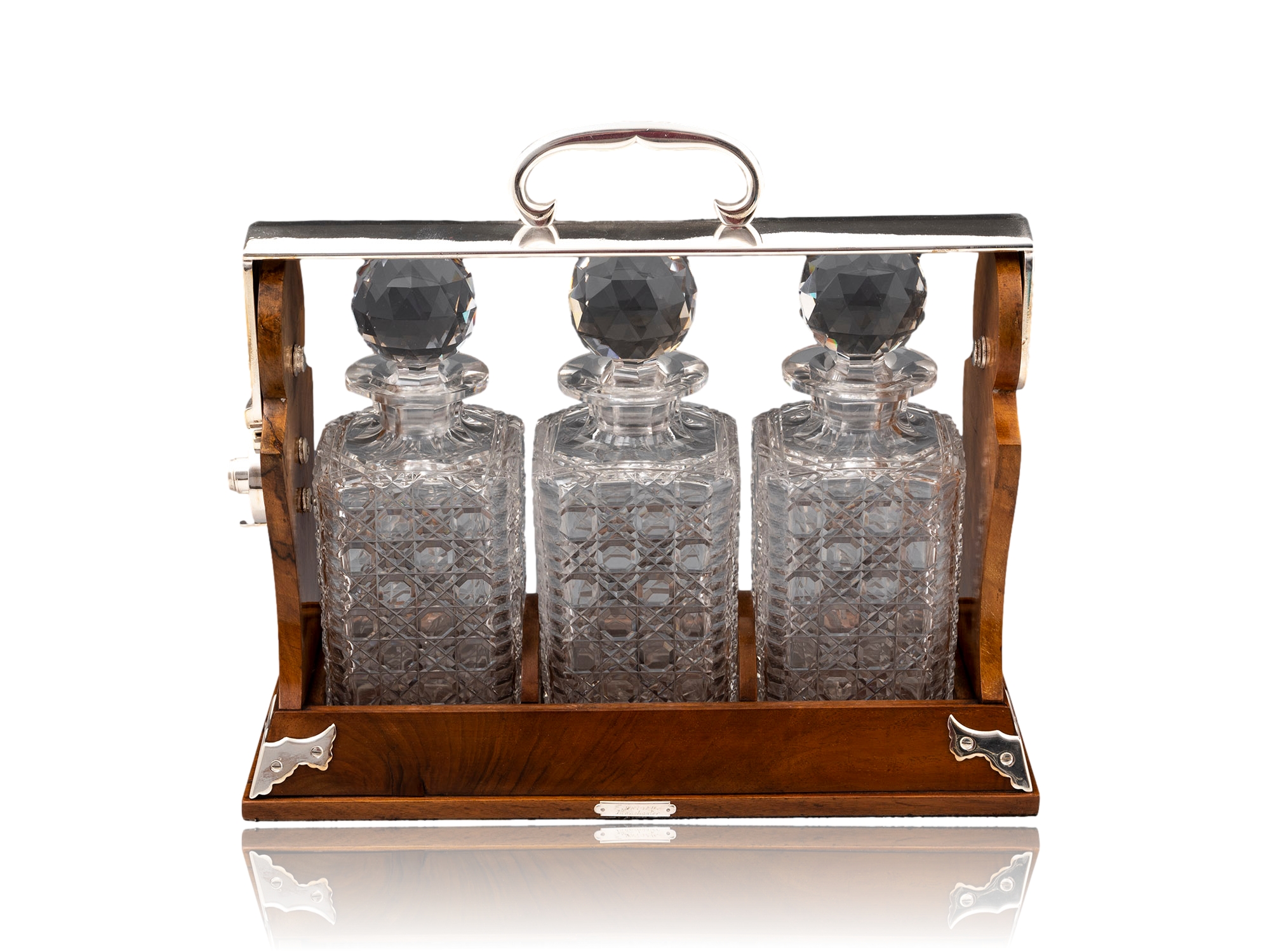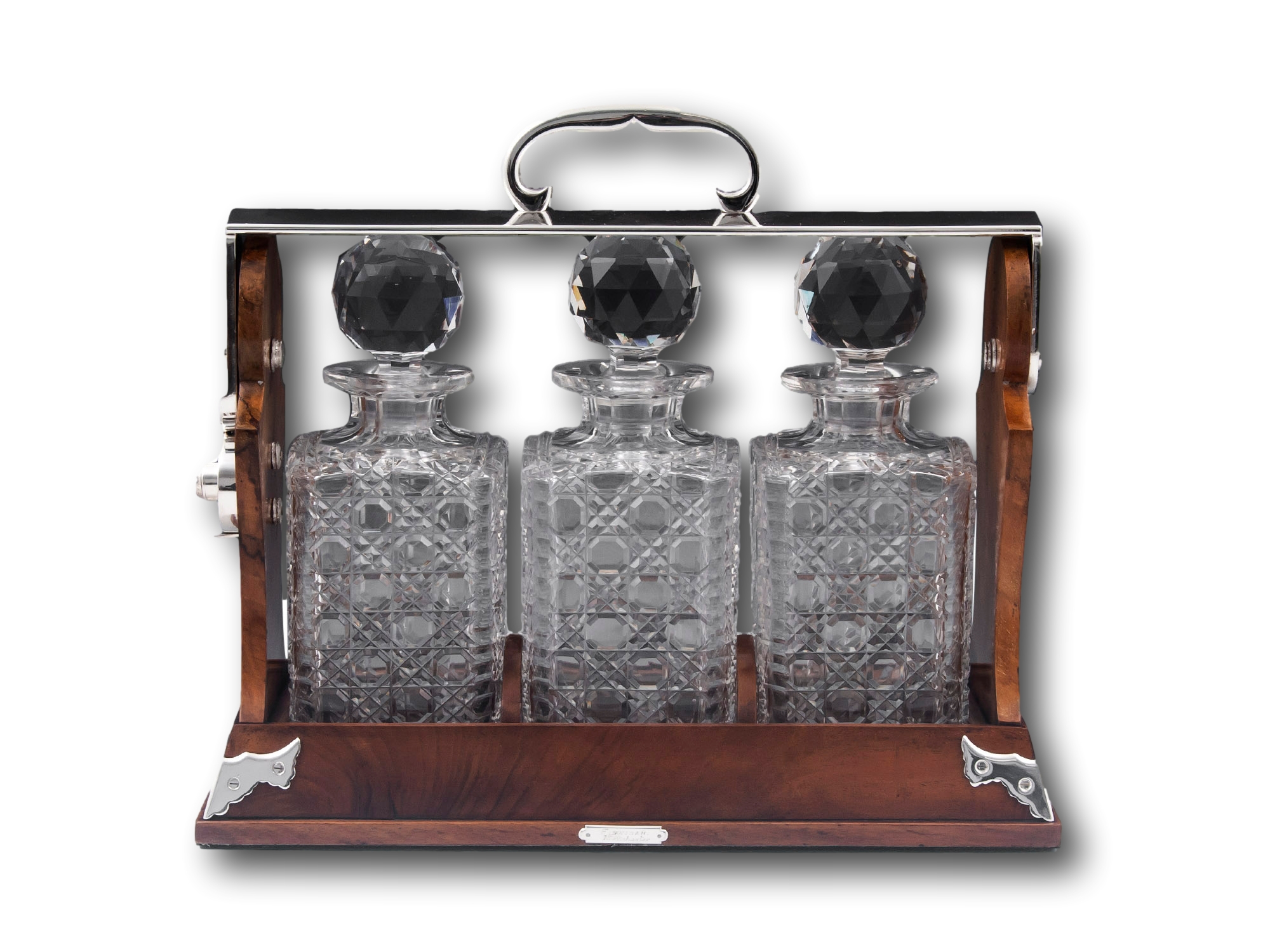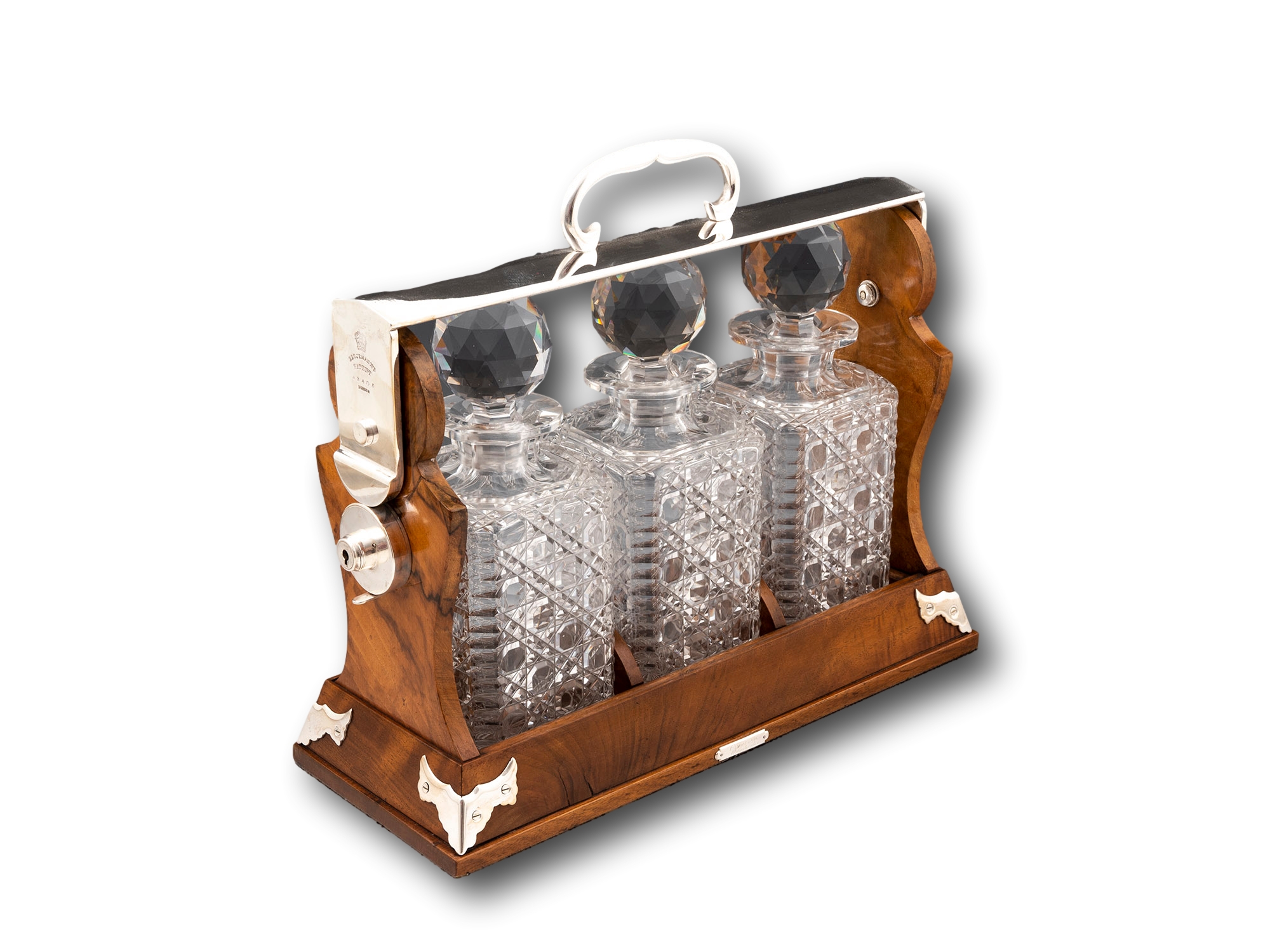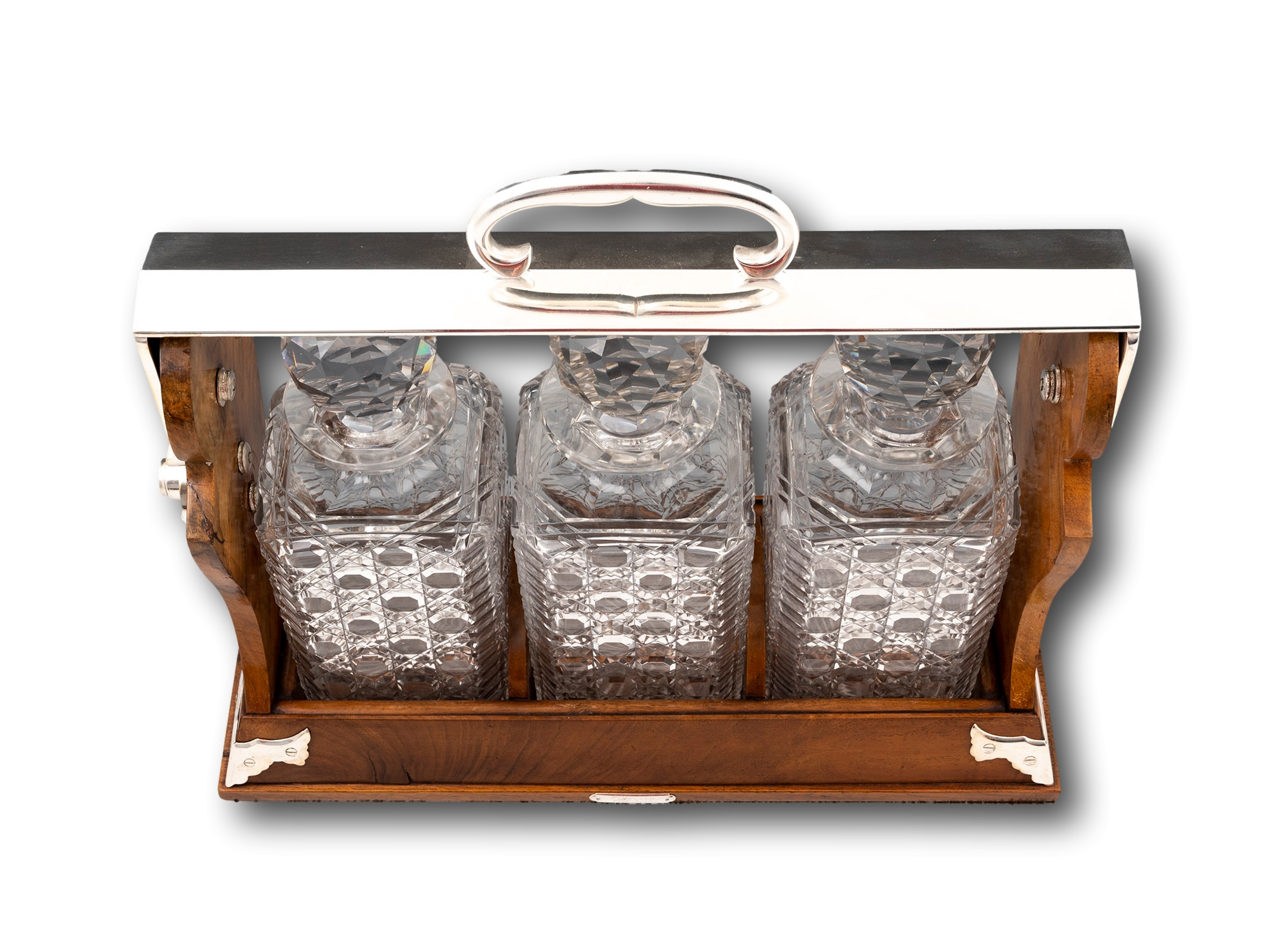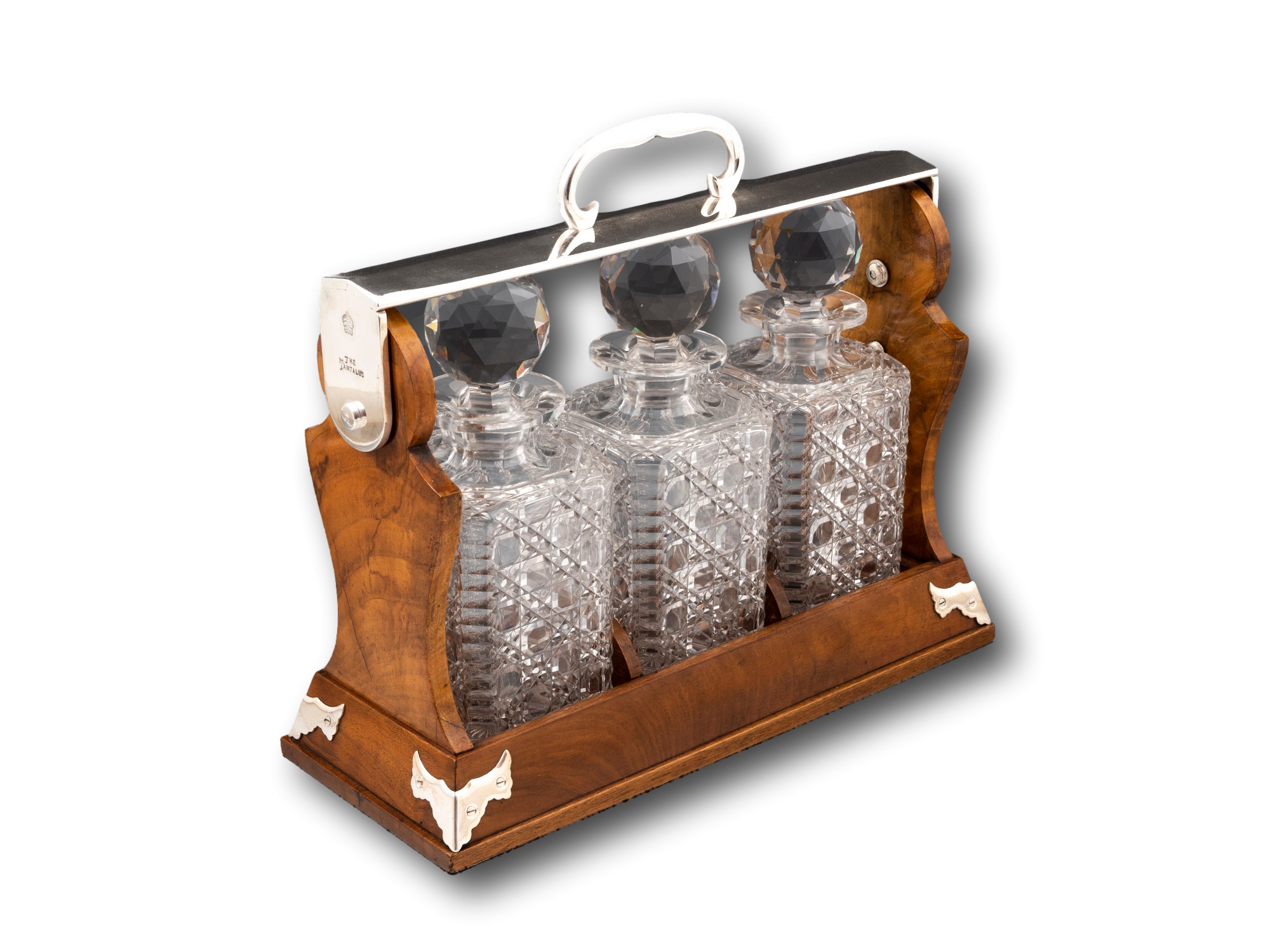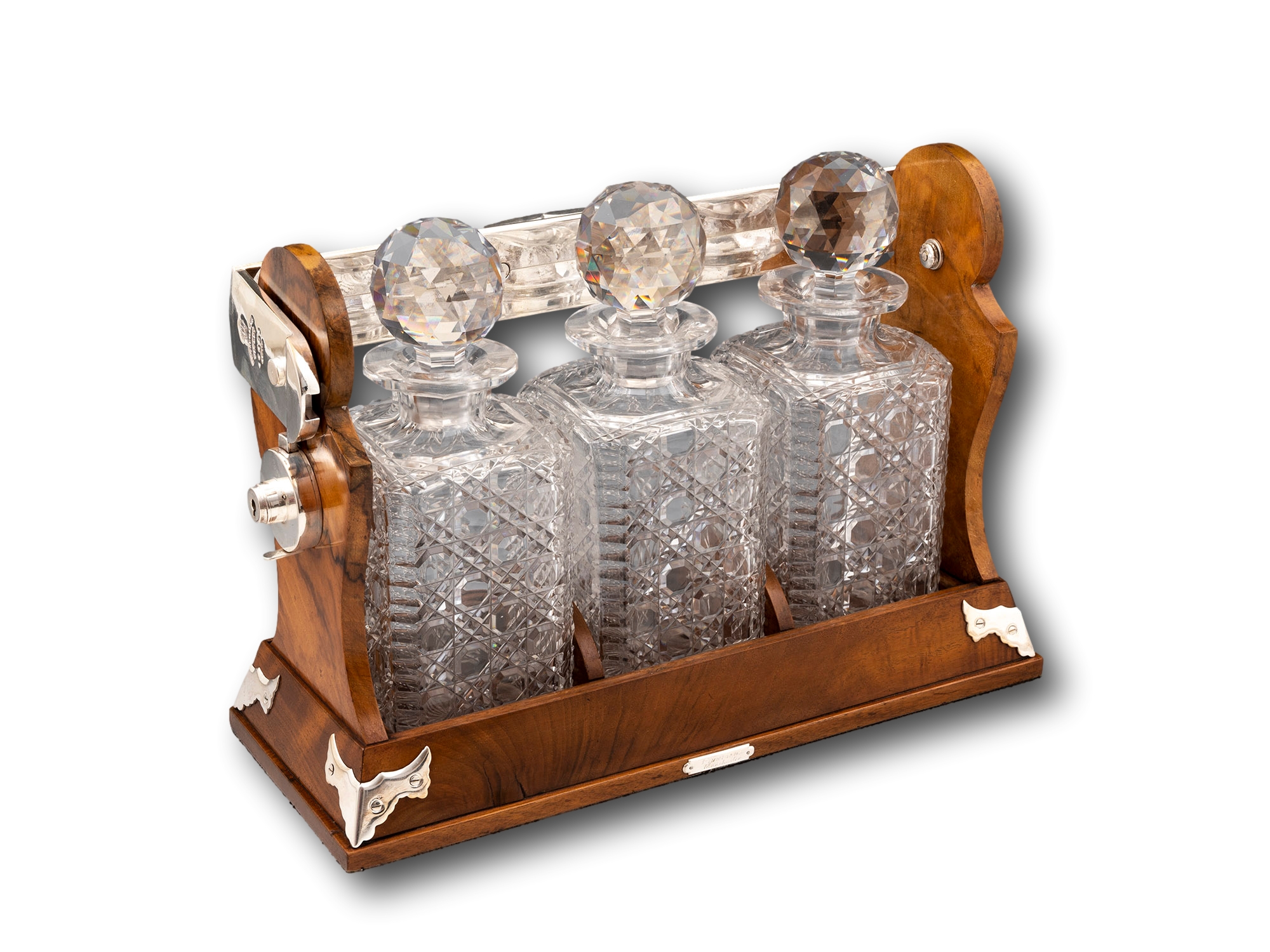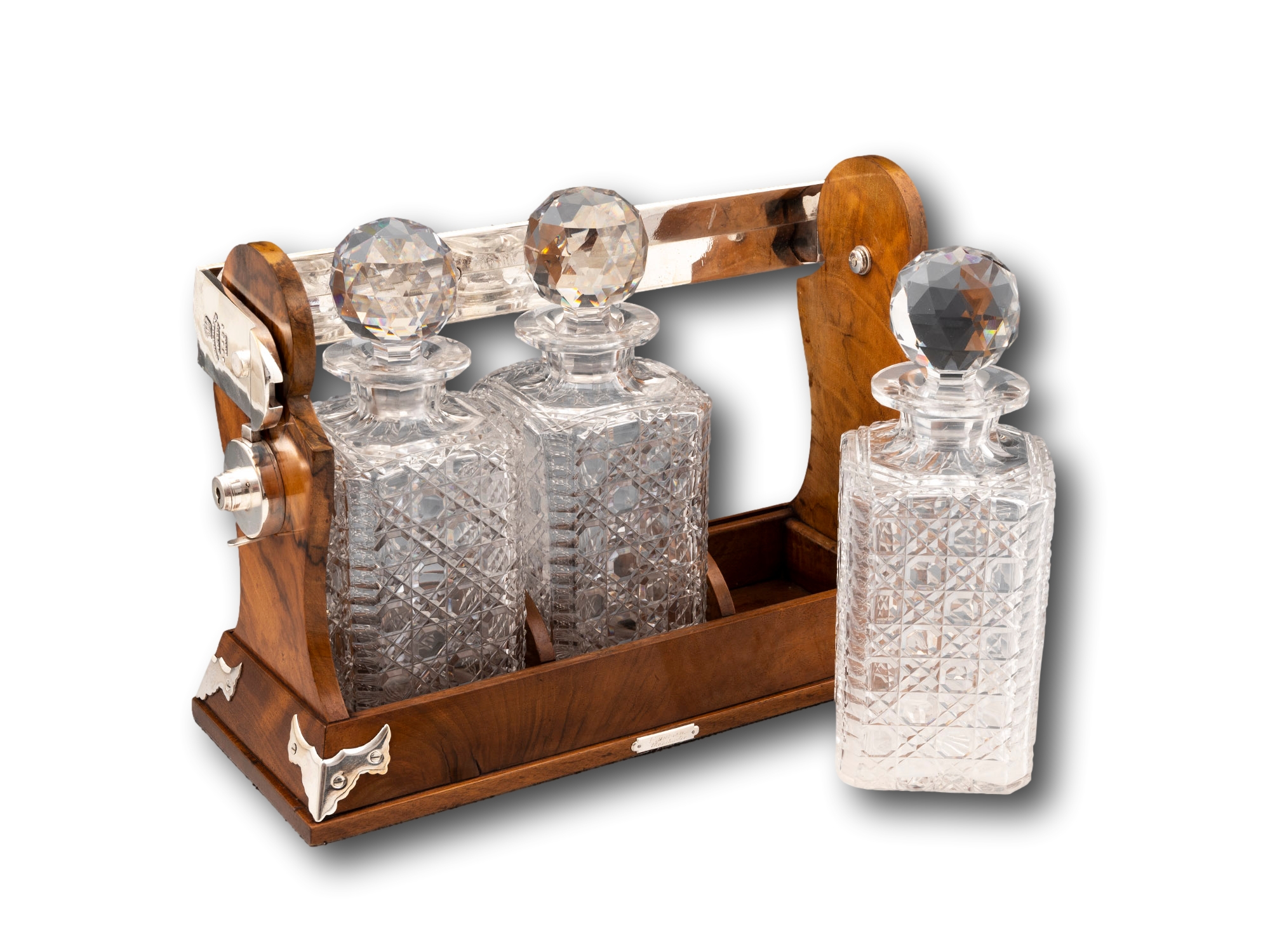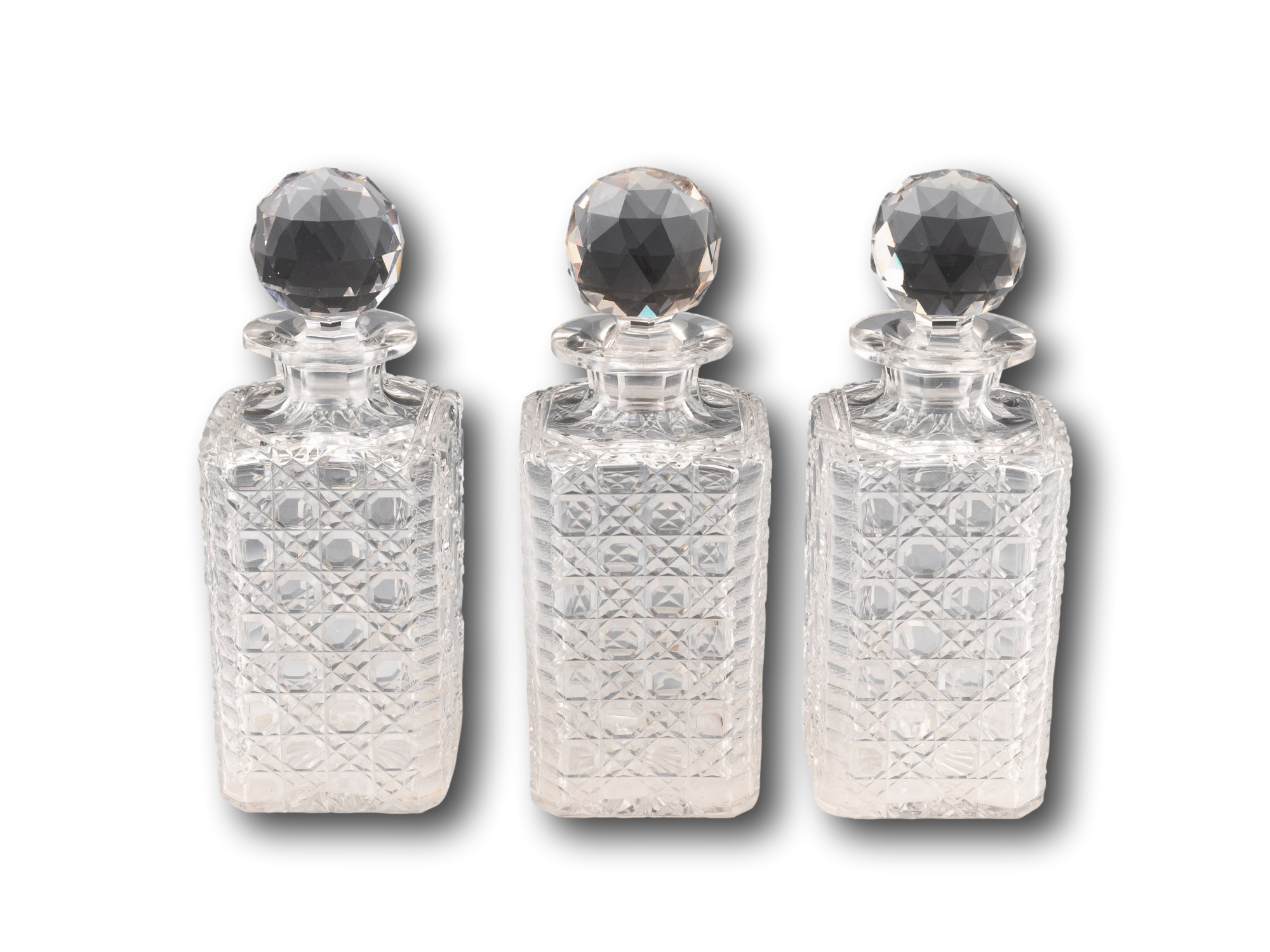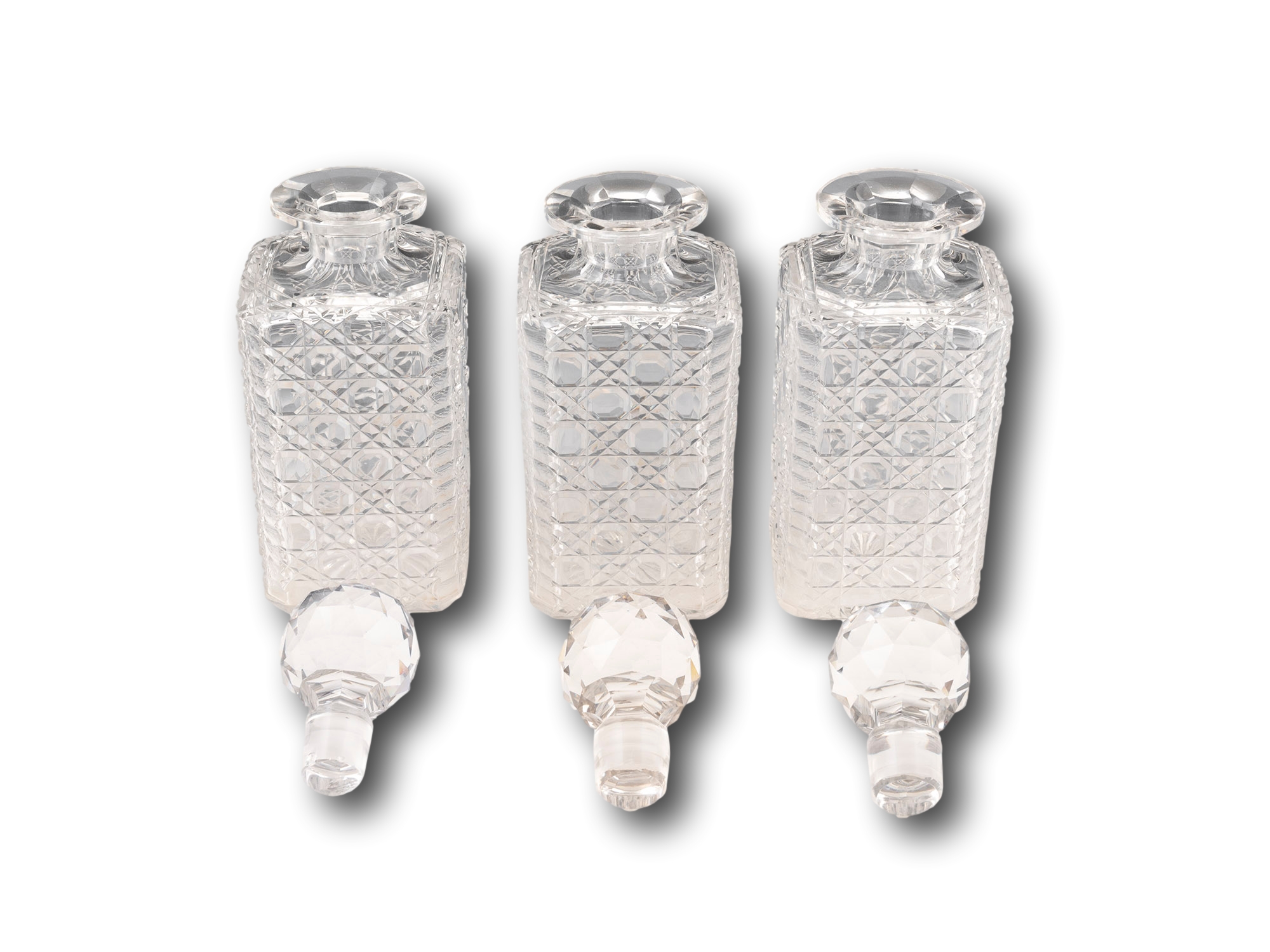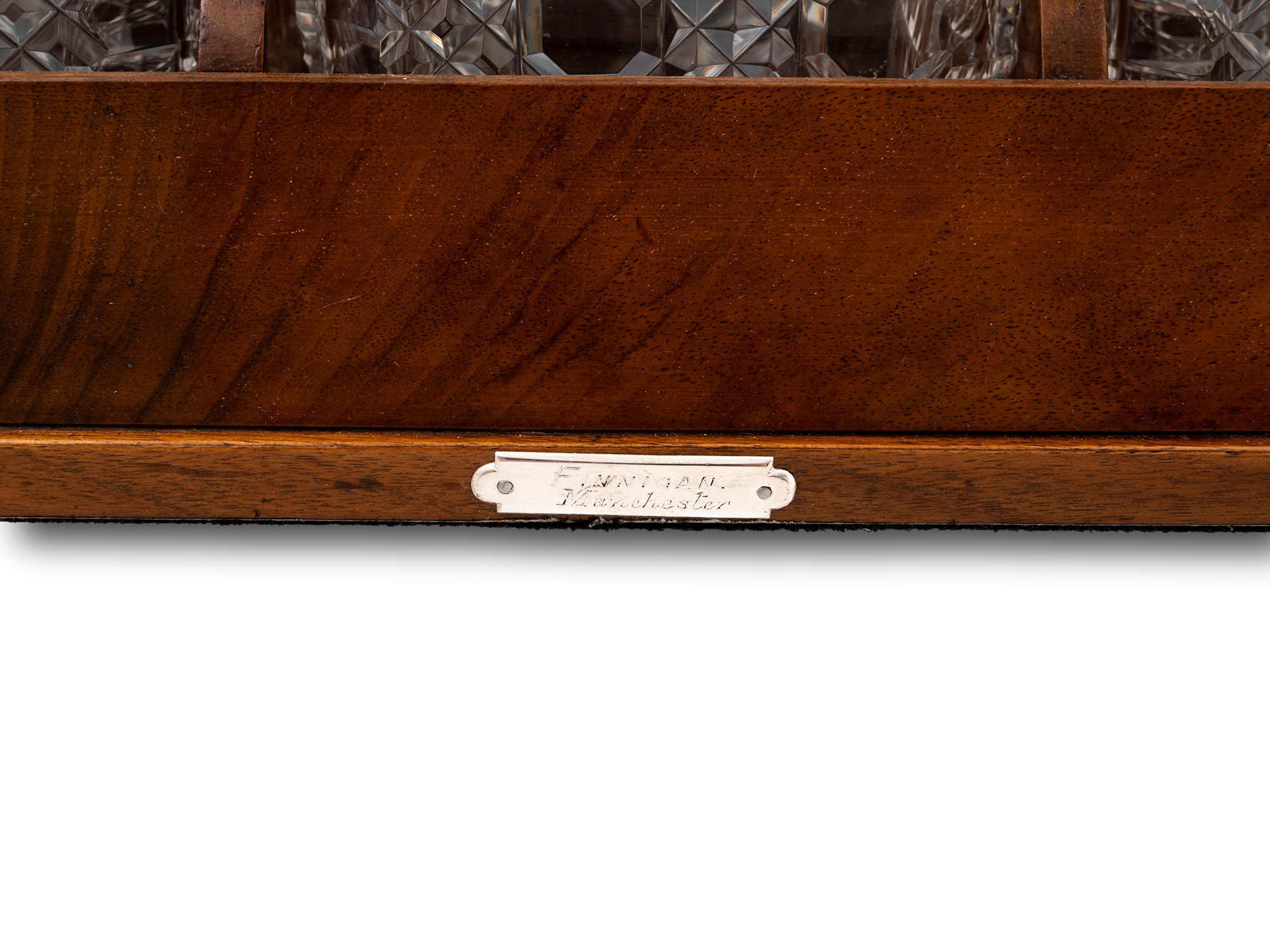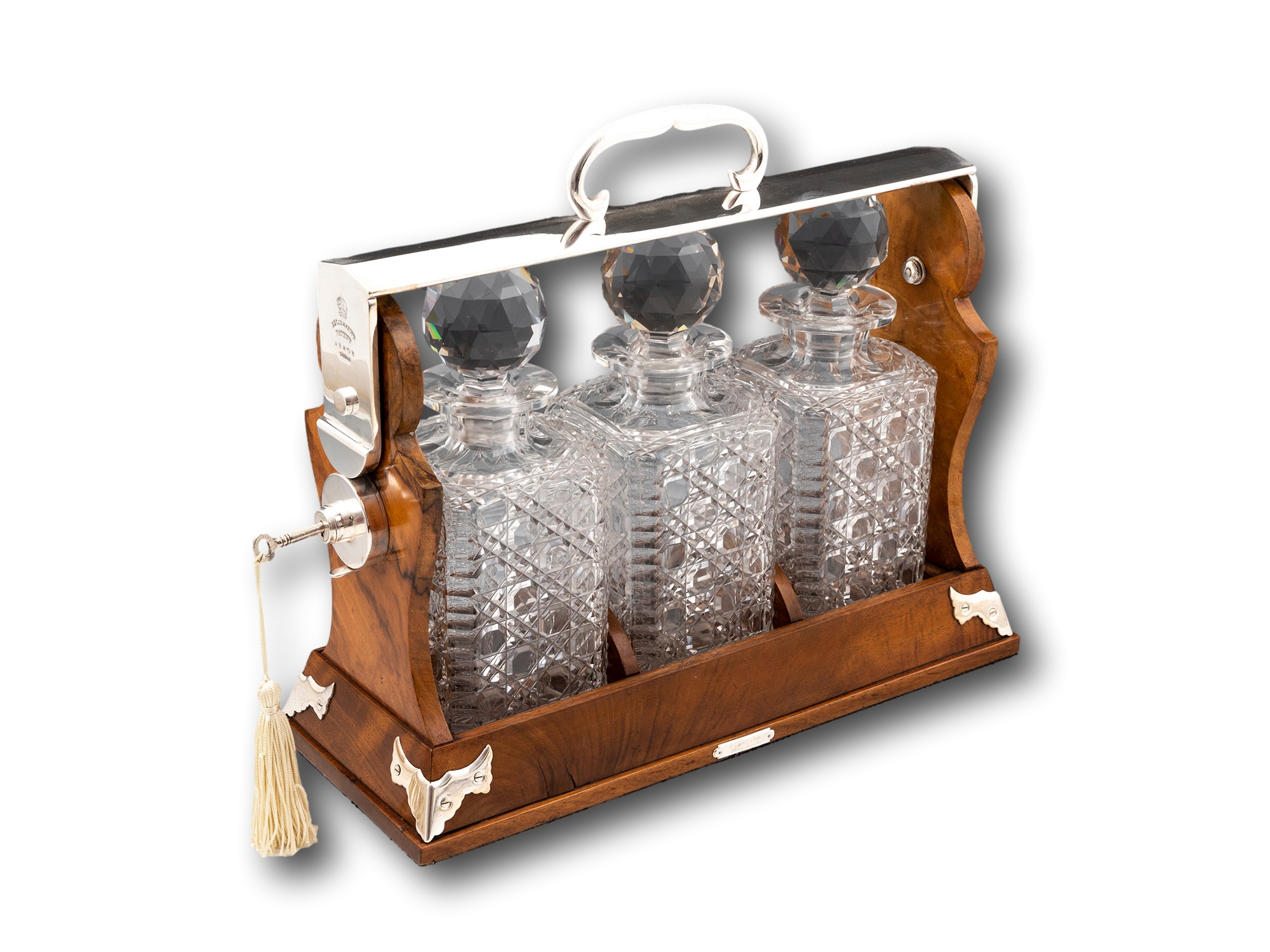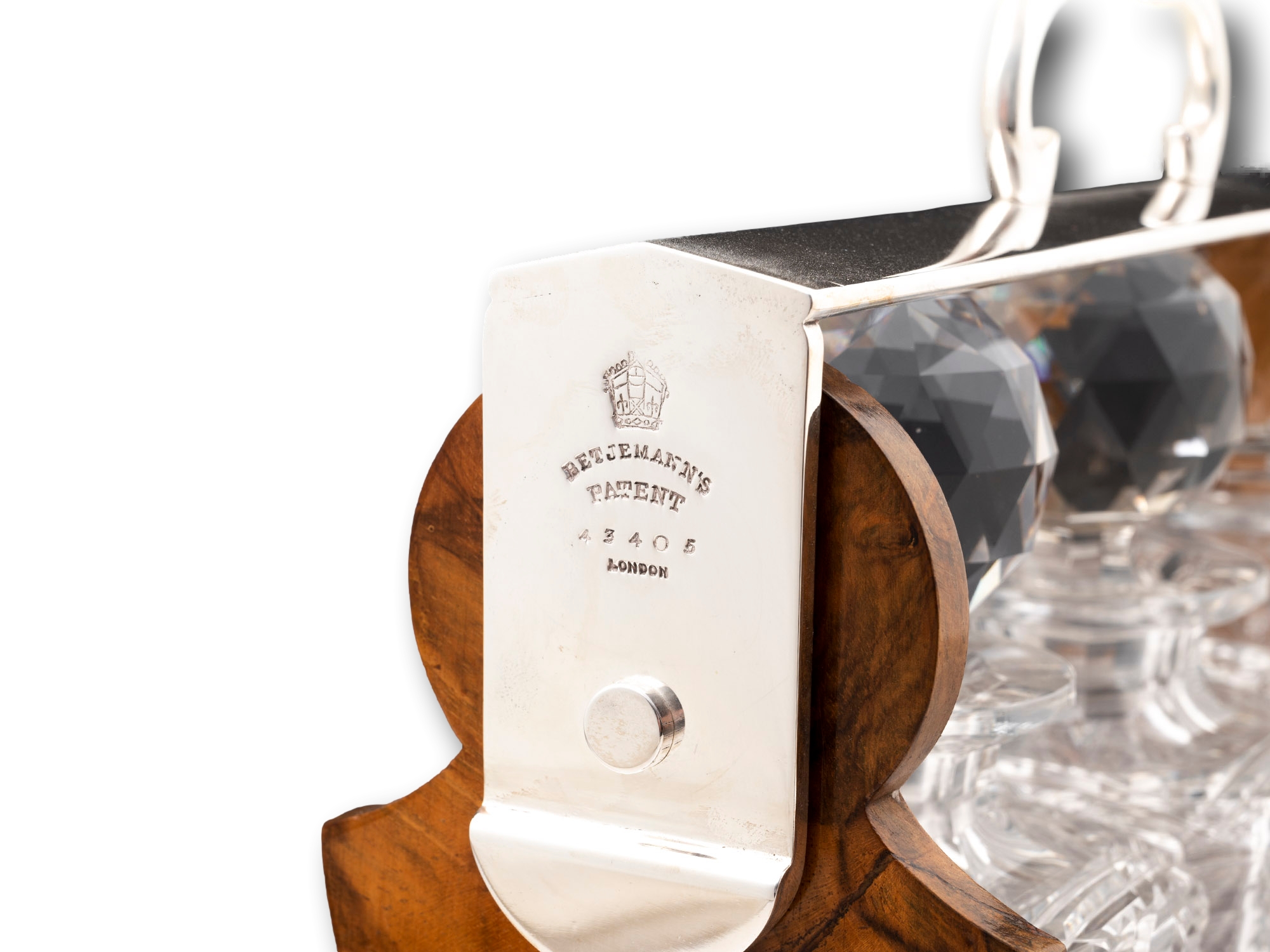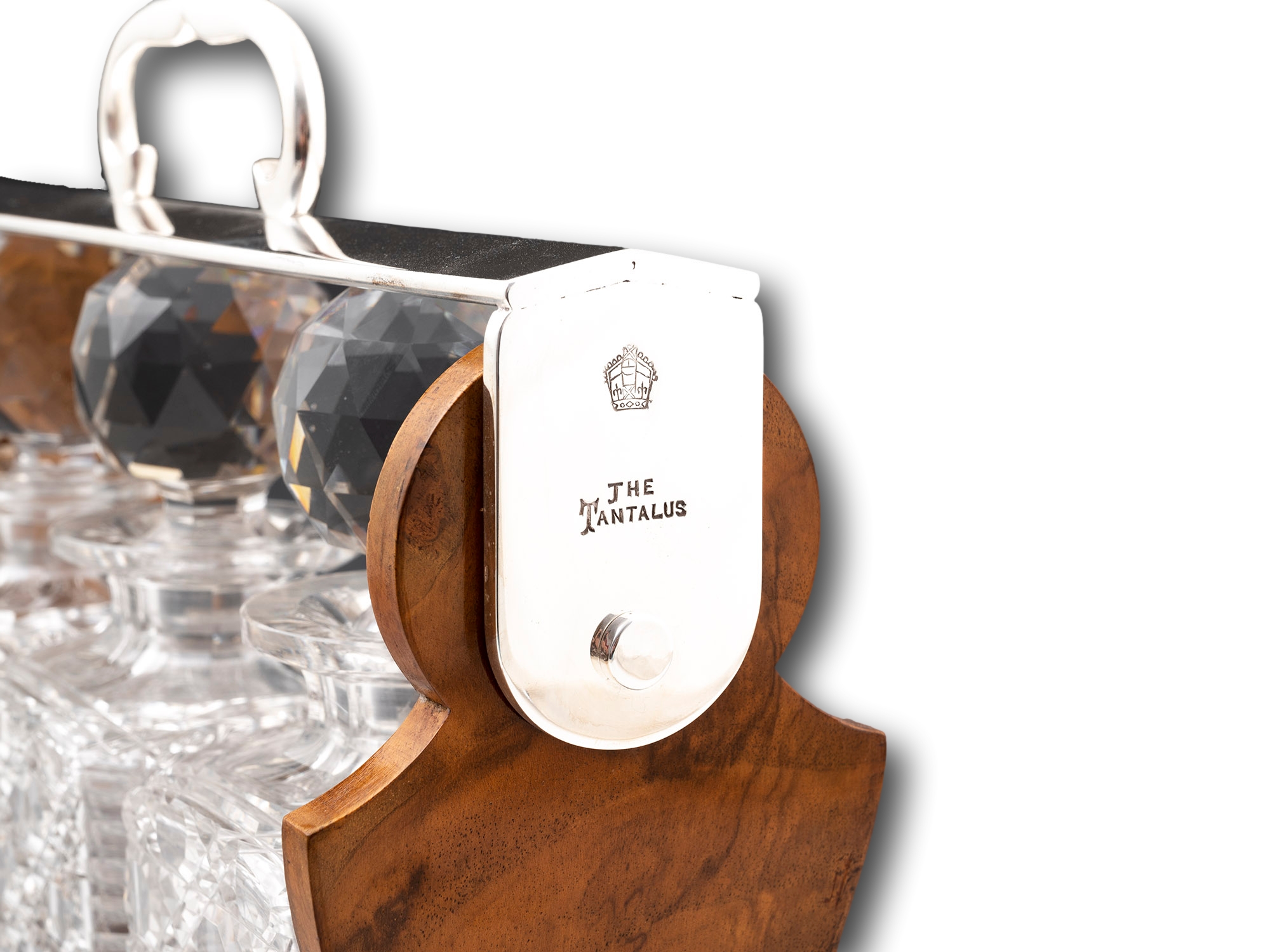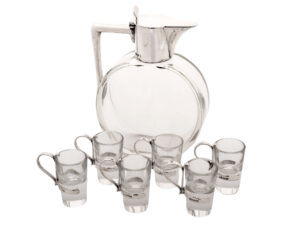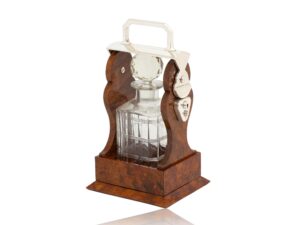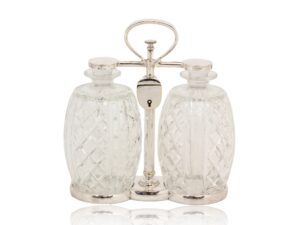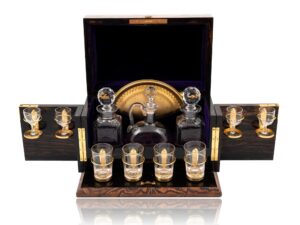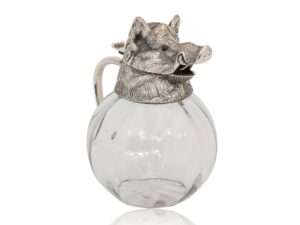Betjemann Walnut Tantalus Retailed by Finnigan
£1,495.00
Original Tantalus Made by Betjemann & Sons From our Decanter collection, we are pleased to offer this Betjemann Walnut Tantalus Retailed by Finnigan. The Tantalus of regular design with plinth base veneered in Walnut with silvered corner brackets and silvered... Read More
Retailed by Finnigan of Manchester, London and Liverpool

| Dimensions | 37 × 15 × 33 cm |
|---|---|
| Period | |
| Year | |
| Country | |
| Medium | |
| SKU | 500764 |
Description
Description
Original Tantalus Made by Betjemann & Sons
From our Decanter collection, we are pleased to offer this Betjemann Walnut Tantalus Retailed by Finnigan. The Tantalus of regular design with plinth base veneered in Walnut with silvered corner brackets and silvered cross beam handle. The Tantalus having a locking mechanism to one side for keeping the spirits out of prying hands. Each side is tamped Betjemann’s Patent 43405 London, The Tantalus. To the front centre of the plinth there is a retailers mark for Finnigan of Manchester. The Tantalus houses three hand cut hobnail decanters with faceted stoppers. The Tantalus dates to the second half of the 19th century during the latter stages of the Victorian period circa 1890.
The Tantalus comes complete with working lock and tasseled key.
Walnut comes in many varieties from America to Europe. American Walnut is often a warm yellow-brown to purple-brown colour with a straight grain. European Walnut tends to vary greatly from tree to tree in terms of colour and pattern. From light grey-brown to dark brown with dark grain and irregular markings. Walnut trees often develop large burr growths which when veneered show beautiful rich coloured swirls.
Betjemann & Sons George Betjemann started as an apprentice cabinet maker from a young age working for his Father in Law. In 1848, his two sons George William Betjemann and John Betjemann joined him under apprenticeships until 1846 when George William Betjemann started his own business with his two sons. In 1859 George moved to a new premises on Pentonville road, London. This was when the business became known as ‘Betjemann & Sons’. John Betjemann was grandfather of the later famous poet laureate Sir John Betjemann.
Finnigan of Manchester (London and Liverpool) were a highly successful English luggage manufacturers. They were one of the finest leather goods makers and luxury goods retailers of their time manufacturing and producing a wide range of luxury products which included trunks, bags, jewellery, timepieces and silverware. It was originally founded by Benjamin Finnigan (trading as Brian B Finnigan) around the 1830’s. Finnigan first apprenticed to a sailing partner of his father’s, Reuben Farrel. The pair made leather goods in Liverpool specialising in bags and trunks that were particularly adapted to the long and tedious journeys of that time. Farrel and Finnigan moved to Manchester as it began to developed into a prosperous city with the boom of the cotton and Finnigan opening his own workshop in Newton Street Mill and a soon after a Finnigans shop in Market Street. He soon became famous for his high quality dressing cases, travelling trunks, leather goods and saddlery. When Benjamin Finnigan died in 1868 he was succeeded by his son William Finnigan who embodied the second generation of the family’s firm. In 1879, William opened a Finnigans shop at New Bond Street, London opposite world renowned firm Asprey. At this time they also diverged and started selling clocks, watches, and silverware amongst other luxury objects. The business continued to be run and owned by generations of the Finnigan family, in 1950’s they moved their Manchester store to Wilmslow and in 1968 closed its New Bond Street store in London. It continued to run until 1988 when the family were bought out around this time by a company called Hoopers.
Victorian an era of British History corresponding approximately with the reign of Queen Victoria from the 20th of June 1837 until her death on 22 January 1901 however, there are arguments stating that the Victorian era is actually from 1820 until 1914 proceeded by Georgian era and followed by the Edwardian era.
With every purchase from Mark Goodger Antiques, you will receive our latest catalogue, a Certificate of Authenticity, detailed care instructions for your chosen piece and an independent invoice (for insurance purposes) will be enclosed. As well as being protected by a no-hassle, money-back policy, your piece will be entirely insured during the shipping process to ensure the safety of your item.
Additional information
Additional information
| Dimensions | 37 × 15 × 33 cm |
|---|---|
| Period | |
| Year | |
| Country | |
| Medium | |
| SKU | 500764 |
